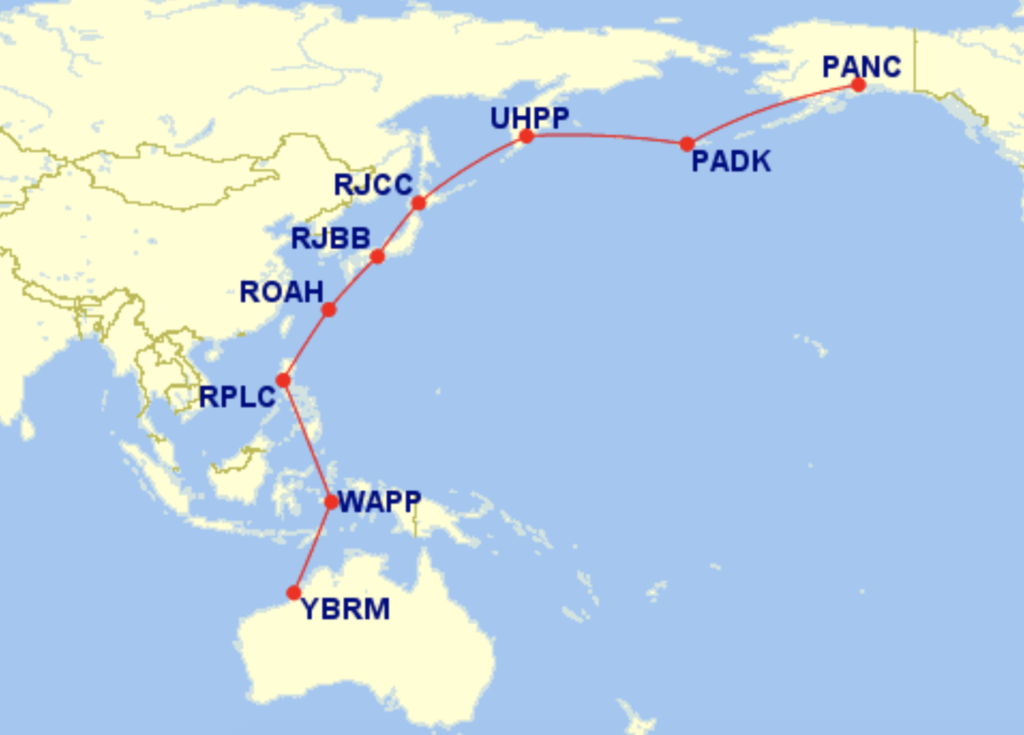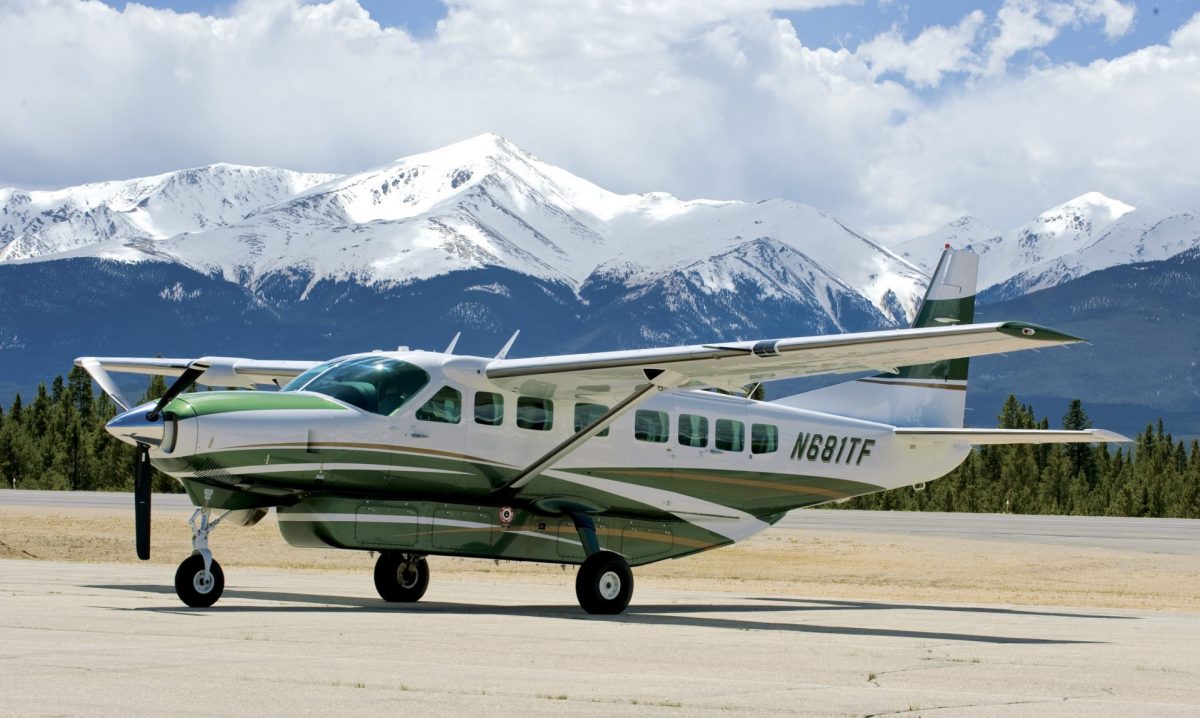Ferry flights are tough to operate even at the best of times. Whether it’s getting a new aircraft from the manufacturer to its customer, moving it to or from a repair facility, or just returning it to base, there are a bunch of things to consider beyond the normal planning you would do for a standard private or charter flight: extra permit requirements, insurance issues, equipment compliance, and a close eye on route planning!
Covid restrictions have made all this even more complicated, with many countries completely closing up shop to everything except repatriation and cargo flights at the start of the pandemic, only to reopen months later with complex entry rules and flight restrictions in place.
Here’s a summary of the main considerations when planning ferry flights, and a recent example of a trip we eventually managed to do despite the Covid restrictions of various different countries at the time.
Permit Requirements
One of the most important considerations for ferry flights is whether or not the aircraft will be operating on a standard Certificate of Airworthiness or on some form of a Special Flight Permit. While some countries around the world will allow an aircraft to overfly or land without permission while operating on a standard Certificate of Airworthiness, most countries will not allow an aircraft operating on a Special Flight Permit (or equivalent) to overfly or land without receiving an additional permit.
Permit Lead Time
When obtaining overflight and landing permission for Special Flight Permits, consideration should be given for the lead time. Some countries have different teams looking after these types of permits than the people who issue the permits for “normal” flights. The lead time can vary from 24 hours to five working days, or even longer. Watch out for weekends too! In some countries the working week is not necessarily Monday-Friday.
Flight support companies and local agents can be invaluable to assist with securing these permissions as they may have local contacts with the civil aviation authorities. These authorities are validating the Special Flight Permit and Operating Limitations, along with the Certificate of Registration and Certificate of Insurance to ensure they meet the requirements for their individual country.
Insurance Requirements
An important consideration when ferrying any aircraft is the Certificate of Insurance. This certificate needs to cover all areas that the aircraft will be operating in, as well as ensuring coverage for any flight crew who may be employed by the aircraft owner. Regions of the world (ex: Europe) may have minimum liability requirements that must be met and clearly stated on the Certificate of Insurance. Even though the certificate states ‘worldwide’ several countries in Central America will require that the certificate clearly states it includes their country prior to issuing the permission.
Navigation Equipment
Ferry flights are often being conducted to move older aircraft from one place to another with navigation equipment that is either out of date, due to be replaced, or unservicable. It is important to ensure that the navigation equipment and the crew qualifications are up to date and that the flight is being conducted in accordance to the requirements for the countries that the flights are overflying and landing at. A common area that local authorities will look at when conducting ramp checks is what equipment has been installed, certified and is operating.
Covid Complications!
In June 2020 we helped an operator move a Cessna 208 Caravan from the US back to Australia. What complicated this flight was that the operator had already attempted to move this aircraft in March at the beginning of the global pandemic to only end up with the aircraft being grounded for three months in Alaska while we waited for central and southern Asia to open up some of their restrictions.
This aircraft was issued an Australian Special Flight Permit which required permission from every country we were operating into or over, and was equipped with a ferry tank system to give us some additional range in our planning. As the flight was operating through Russia with an overnight stop, the crew were required to obtain Russian transit visas and due to the pandemic testing requirements, the crew were required to be tested prior to departing from the US as well as when en-route in the Philippines.
In the end, we decided on the following routing: PANC/Anchorage – PADK/Adak Island – UHPP/Petropavlosk – RJCC/Sapporo -RJBB/Osaka – ROAH/Okinawa – RPLC/Angeles – WAPP/Ambon – YBRM/Broome
 We got special permission for the crew to stay overnight in PADK, UHPP, RJBB, RPLC and WAPP for crew rest.
We got special permission for the crew to stay overnight in PADK, UHPP, RJBB, RPLC and WAPP for crew rest.
Even without the additional Covid-related requirements, due to the Special Flight Permit, Japan required additional permissions from various government agencies, including their military. We got a local agent to assist with these arrangements, as well as the special Customs & Immigration arrangements required for the crew to remain overnight in RJBB. They were not authorized to remain overnight under any circumstances in RJCC or ROAH.
While the global pandemic raised a number of additional requirements, we needed to consider several things when determining the ferry flight for this aircraft. The most important consideration was aircraft range. Thanks to the ferry fuel system, we were able to have ample range to fly from Alaska into a customs airport in Russia. While a routing from PANC to UHMA (with or without a stop in PAOM) was considered, it was not possible at the time as UHMA was closed to all international traffic.
The routing through Japan was carefully considered with extensive consultation (and changes) with the Japanese agent. Many local authorities at different airports were back and forth on whether the crew would be allowed to overnight, and it was imperative to find an airport that would allow the crew sufficient rest.
The routing from Japan into the Philippines and through to Indonesia remained a challenge right up to the day of flight. Indonesia reopened their borders to international flights after the crew departed from the US, and required the crew to have a fresh Covid test which was arranged in the Philippines.
More info
Check out our Guide to Getting Unusual Permits. It has the details on 28 countries that have a special process for Ferry Flights and other Special Permits. You’ll find Civil Aviation Authority contact details, Agent details (when necessary), and our descriptions of the best practice for each permit.
More reading:
- Latest: Venezuela & Caribbean Airspace Update
- Latest: ReFuelEU: Europe’s new anti-tankering rules explained
- Latest: US CBP biometrics: BizAv rollout still unclear
- Safe Airspace: Risk Database
- Weekly Ops Bulletin: Subscribe
- Membership plans: Why join OPSGROUP?











 Get the famous weekly
Get the famous weekly 






Hey, is there anyone in I can get in touch with for ferry information, as I would like to bring my aircraft; Mooney m20c from canada to Australia, I am a canadian citizen and australian permanent resident. I would eventually sell the aircraft in the Aussie market, is there anyone who can get in touch with me, as any information would help. Thanks!
This has nothing to do with your present article, but just wanted to pass on my experience with a ferry from the US to Peru and the fuel stop I thought I was going to make at Roatan. I was flying a US Gov aircraft and had dip clearance to overnight and refuel in Bocas del Toro, Panama. Landed to find out that there were no fuel facilities there, and never were! But the AirCard FBO locator map on their website said there was, and I had it all set up with World Fuel Services well before the flight. It turns out that the fuel shown at Bocas del Toro was really located at a banana crop dusting strip called Chinguinola about 17 miles to the west. Luckily they allowed us an unscheduled flight there and back and we got our fuel no problem. I called AirCard and they said they’d look into it, but they still show it as a fuel stop.
Anyway, I am based down here in Lima, Peru, so have a lot of local gouge. Let me know if you ever need any up to date info, NOTAMS etc on Peru.
Take care, Jack .
This has nothing to do with your present article, but just wanted to pass on my experience with a ferry from the US to Peru and the fuel stop I thought I was going to make at Roatan. I was flying a US Gov aircraft and had dip clearance to overnight and refuel in Bocas del Toro, Panama. Landed to find out that there were no fuel facilities there, and never were! But the AirCard FBO locator map on their website said there was, and I had it all set up with World Fuel Services well before the flight. It turns out that the fuel shown at Bocas del Toro was really located at a banana crop dusting strip called Chinguinola about 17 miles to the west. Luckily they allowed us an unscheduled flight there and back and we got our fuel no problem. I called AirCard and they said they’d look into it, but they still show it as a fuel stop.
Anyway, I am based down here in Lima, Peru, so have a lot of local gouge. Let me know if you ever need any up to date info, NOTAMS etc on Peru.
Take care, Jack Nisen.